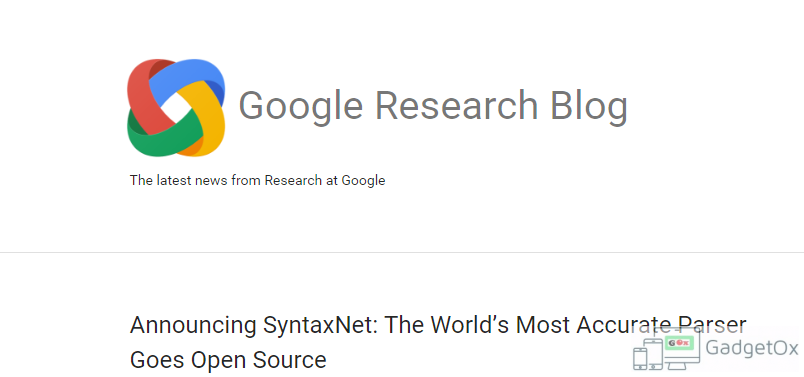
Whoa, it’s Gonna Machine world not Man’s!! And it has started, Learning a Language is the First step in communication or the Entry of a Human in Community. Google has released a Open source AI Software/Framework named SyntaxNet and Parsey McParseface that understands English, for free for developers to use. So we can say Google has initiated the Robots entry in civilization by giving the ability to parse English Language
“SyntaxNet, an open-source neural network framework implemented in TensorFlow that provides a foundation for Natural Language Understanding (NLU) systems. Our release includes all the code needed to train new SyntaxNet models on your own data, as well as Parsey McParseface, an English parser that we have trained for you and that you can use to analyze English text”.
How does SyntaxNet work?
This is How Google Explains it
SyntaxNet is a framework for what’s known in academic circles as a syntactic parser, which is a key first component in many NLU systems. Given a sentence as input, it tags each word with a part-of-speech (POS) tag that describes the word’s syntactic function, and it determines the syntactic relationships between words in the sentence, represented in the dependency parse tree. These syntactic relationships are directly related to the underlying meaning of the sentence in question. To take a very simple example, consider the following dependency tree for Alice saw Bob:
This structure encodes that Alice and Bob are nouns and saw is a verb. The main verb saw is the root of the sentence and Alice is the subject (nsubj) of saw, while Bob is its direct object (dobj). As expected, Parsey McParseface analyzes this sentence correctly, but also understands the following more complex example:
This structure again encodes the fact that Alice and Bob are the subject and object respectively ofsaw, in addition that Alice is modified by a relative clause with the verb reading, that saw is modified by the temporal modifier yesterday, and so on. The grammatical relationships encoded in dependency structures allow us to easily recover the answers to various questions, for examplewhom did Alice see?, who saw Bob?, what had Alice been reading about? or when did Alice see Bob?.
Why is Parsing So Hard For Computers to Get Right?
One of the main problems that makes parsing so challenging is that human languages show remarkable levels of ambiguity. It is not uncommon for moderate length sentences – say 20 or 30 words in length – to have hundreds, thousands, or even tens of thousands of possible syntactic structures. A natural language parser must somehow search through all of these alternatives, and find the most plausible structure given the context.


